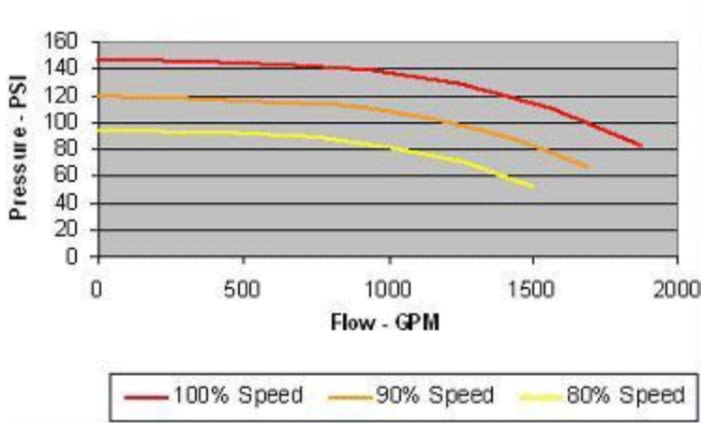hgordon
Chemical
- Jan 23, 2018
- 33
Hi all,
I am troubleshooting an old diesel driven fire pump (sprinklers) which is giving less pressure boost at 5600 l/min than it used to.
In 2009 it produced 5600 l/min at 680 kPa at 1900 rpm, but in 2018 it produces 5600 l/min at 540 kPa at 1900 rpm.
Talking to a diesel guy, he says maybe the diesel has lost the torque it used to have (installed since 1980 Ford Leyland).
Which sounded logical - but would that not mean in 2018 at 5600 l/min torque load the rpms would decrease below 1900rpm because the torque is not there from engine to keep the revs at constant 1900 rpm?
Instead the revs are constant but the boost pressue is not - sounds to me more like to pump impeller is the issue?
Because the pump is still getting the 1900 rpm but not putting out the boost (impeller is always same).
This sounds right?
Thanks,
I am troubleshooting an old diesel driven fire pump (sprinklers) which is giving less pressure boost at 5600 l/min than it used to.
In 2009 it produced 5600 l/min at 680 kPa at 1900 rpm, but in 2018 it produces 5600 l/min at 540 kPa at 1900 rpm.
Talking to a diesel guy, he says maybe the diesel has lost the torque it used to have (installed since 1980 Ford Leyland).
Which sounded logical - but would that not mean in 2018 at 5600 l/min torque load the rpms would decrease below 1900rpm because the torque is not there from engine to keep the revs at constant 1900 rpm?
Instead the revs are constant but the boost pressue is not - sounds to me more like to pump impeller is the issue?
Because the pump is still getting the 1900 rpm but not putting out the boost (impeller is always same).
This sounds right?
Thanks,

